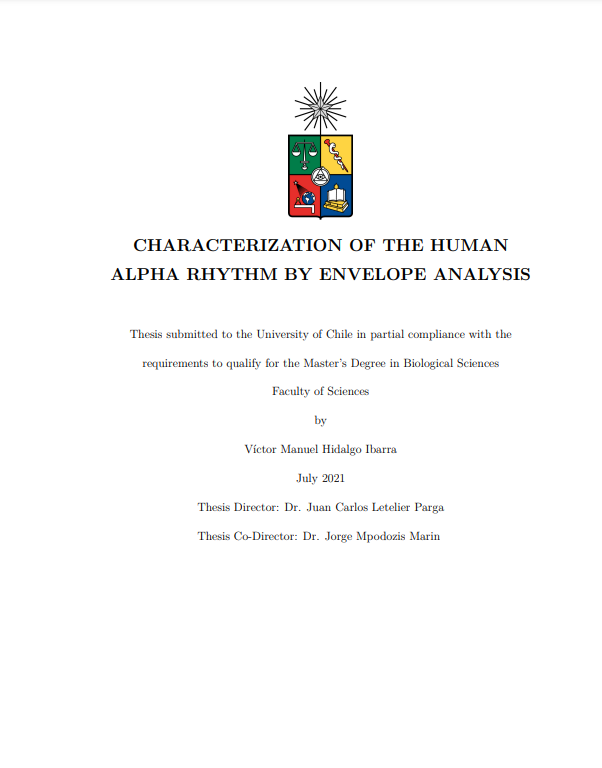Characterization of the human alpha rhythm by envelope analysis
Licencia: Creative Commons (by-nc-nd)
Autor(es): Hidalgo, Víctor
The alpha rhythm is an electrical activity pattern revealed by electroencephalography (EEG) recordings, which was first described by Dr. Berger in awake subjects with their eyes closed, disappearing when subjects open their eyes. The usual characterization of this phenomenon shows specific temporal and spatial activity, distinguished as an increase of the spectral power in the alpha band (8-13[Hz]) in signals obtained from the occipital region of the scalp. Nevertheless, this characterization allows making no assertion about the dynamics of the participating neural populations. The envelope analysis offers a tool to evaluate such behavior from EEG signals. In particular, this method is based on the fact that the coefficient of variation of the envelope (CVE) of a Gaussian process is a universal constant equal to √ (4 − π)/π ≈ 0.523. Asynchronous recordings show a CVE close to this constant, while synchronous processes are detected as significant deviations from this reference value. The analysis demonstrated that the alpha rhythm behaves as a Gaussian and a synchronous process due to intra- and inter-subject variability. On the other hand, Berger's initial observation regarding the energy change between experimental conditions held regardless of the CVE values involved. In light of these results, the implications for the EEG and signal analysis fields are discussed.
[Santiago: 2021]
Compartir:
Una vez que el usuario haya visto al menos un documento, este fragmento será visible.


